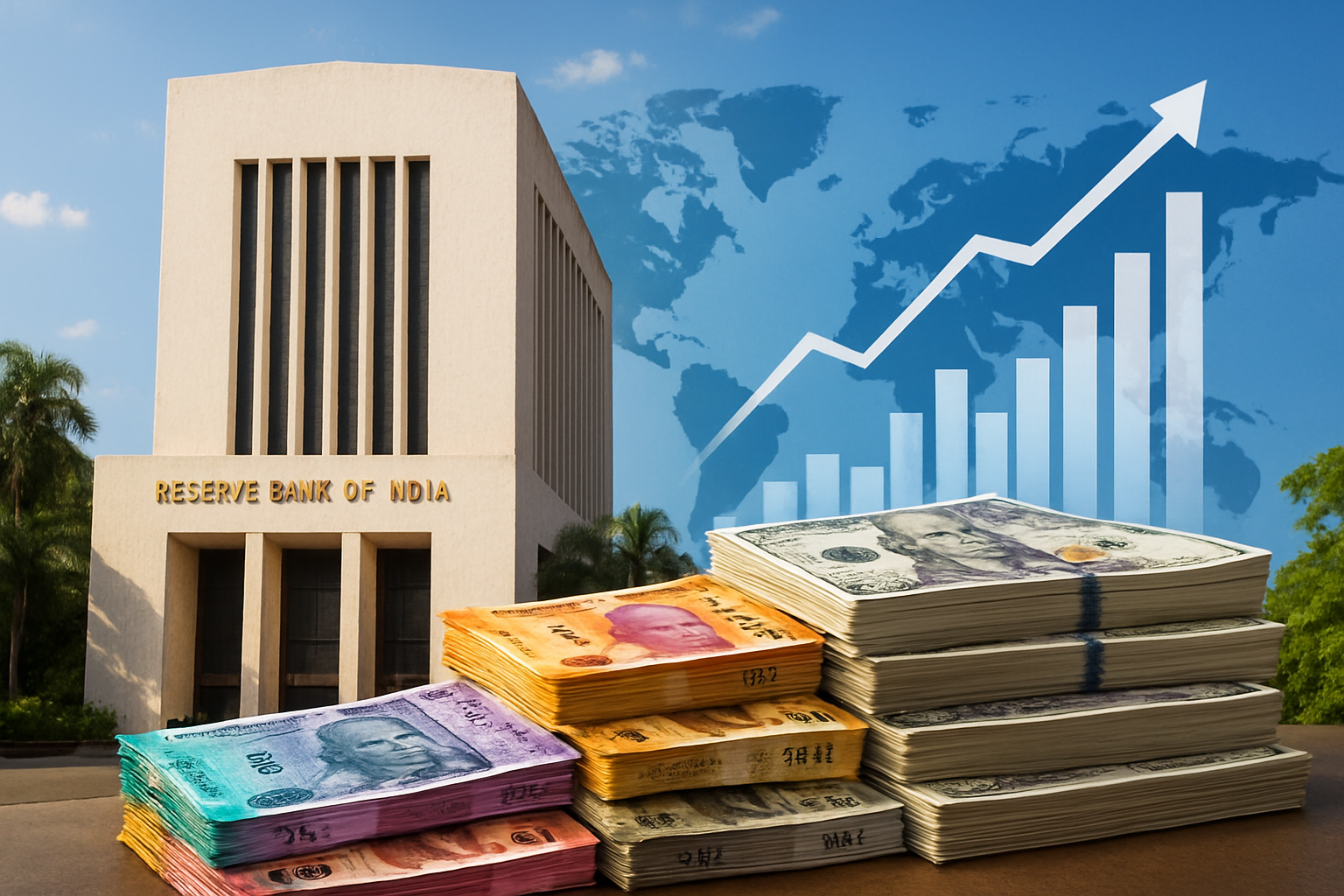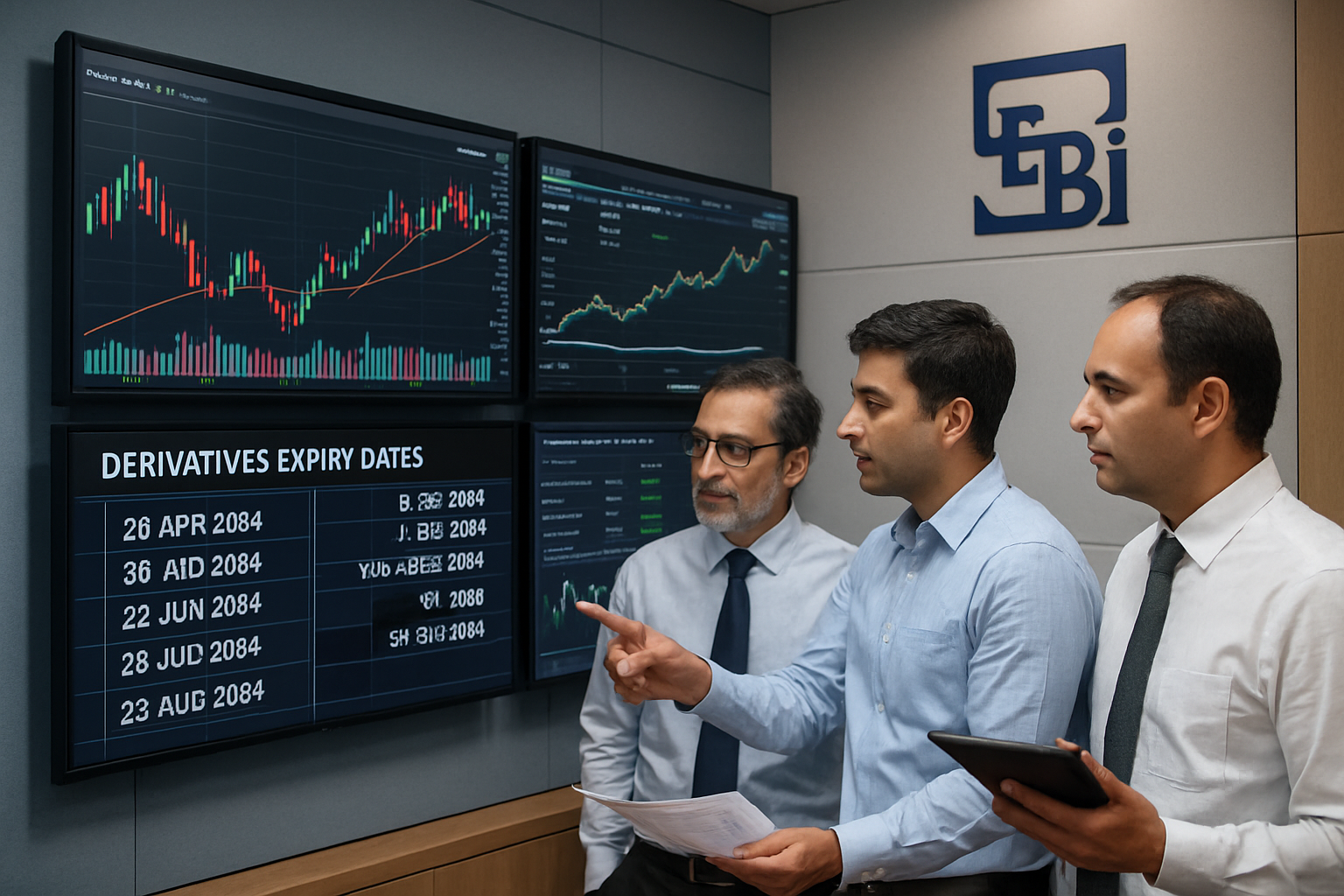India’s burgeoning foreign exchange reserves are a testament to its maturing financial architecture and economic resilience. With reserves reaching an impressive $691.5 billion as of May 30, 2025, the nation solidifies its standing as a formidable force in the global financial system.
This milestone not only reinforces India’s macroeconomic credibility but also holds crucial implications for trade sustainability, currency defense, and global investor confidence amid evolving market dynamics.
India’s Foreign Exchange Reserves: Composition and Strategic Significance
India now ranks as the world’s fourth-largest holder of foreign exchange reserves, trailing only behind China, Japan, and Switzerland. The Reserve Bank of India (RBI) reported a reserve total of $691.5 billion, providing a strategic buffer covering over 11 months of goods imports and almost the entirety—96%—of the country’s external debt obligations.
This composition includes foreign currency assets, gold, special drawing rights (SDRs), and India’s reserve position in the International Monetary Fund (IMF). The diversification helps reduce vulnerability to global shocks and ensures liquidity under volatile conditions, especially when global capital becomes scarce or markets face disruptions.
The RBI’s proactive reserve management plays a pivotal role in minimizing currency volatility, supporting the rupee against adverse capital flows, and maintaining overall economic stability. This aligns with India’s broader objective of positioning itself as a reliable destination for long-term institutional investment.
Strength of the External Sector Despite Trade Deficit Expansion
Despite facing a wider merchandise trade deficit of $8.65 billion in April 2025—attributable to rising global import prices and fluctuating demand—India’s external sector has remained fundamentally robust. A key reason is the strength of its service exports and resilient inward remittances, which together offset deficits on the goods trade account.
According to official sources, the current account deficit (CAD) narrowed significantly to $21.4 billion in FY 2024–25 from $67.1 billion in 2022–23. This sharp improvement underscores enhanced balance-of-payments (BoP) dynamics and indicates long-term sustainability even in the face of temporary trade imbalances.
The Indian rupee, despite global headwinds, has emerged as one of the more stable Asian currencies. As Finance Minister Nirmala Sitharaman emphasized in a recent Rajya Sabha address, the country’s strong forex buffer acts as a firewall against economic shocks, while continuing capital inflows support the rupee’s resilience.
Robust Investment Inflows and Favorable Outlook Drive Portfolio Opportunities
India’s rising foreign exchange reserves are underpinned by a surge in capital inflows, reflecting growing investor confidence in its economic prospects. According to government data, gross foreign direct investment (FDI) increased by 14% in FY25, driven by pro-business reforms, policy liberalization, and strategic focus on sectors like renewable energy, manufacturing, and digital infrastructure.
Moreover, external commercial borrowings (ECBs) and non-resident deposits have also recorded healthy inflows, bolstering the capital account. These inflows not only diversify India’s foreign exchange sources but also indicate strong interest from the global Indian diaspora and multinational corporations eyeing expansion in Asia’s third-largest economy.
Foreign portfolio investment (FPI) activity has notably rebounded after temporary outflows between October 2024 and March 2025. This recovery reflects improved global sentiment and a renewed appetite for emerging markets, particularly as India maintains high-growth projections and introduces investor-friendly regulatory frameworks. For instance, tech and green energy sectors have seen a spike in foreign interest due to their strong return potential and government incentives.
The Reserve Bank of India’s recent 50 basis point cut in the repo rate to 5.5% adds fuel to investor optimism. Combined with a controlled inflation rate—projected CPI inflation stands at 3.7%—and sustained GDP growth expectations of 6.5% through March 2026, India presents a compelling investment landscape amidst global uncertainty.
For investors seeking exposure to resilient, growth-oriented markets, rupee-denominated assets—including sovereign bonds and equity instruments—are increasingly attractive. The stability offered by India’s immense forex reserves shields portfolios from abrupt currency swings while opening doors to alpha-generating sectors such as pharmaceuticals, infrastructure, and digital services.
Real-world example: A European family office, previously underweight in emerging markets, recently increased its allocation to Indian green bonds and large-cap equities following improved capital account figures and concessional FPI taxation reforms. This move was largely based on India’s foreign currency buffer and favorable macro forecasts.
Opportunities like these are increasingly accessible to investors prepared to align with long-term trends in India’s economic evolution. Strategic portfolio positioning in such an environment calls for informed decision-making and clarity on sectoral outlooks, tax treatment, and risk-adjusted returns.
Contact MintByte today to discuss investment opportunities that suit your goals.
🗓 Book a Meeting: 📩 Meeting Link
📝 Contact Us: 📋 MintByte Contact Form
Disclaimer: The information provided herein is solely for informational purposes. It should not be construed as investment advice, an offer to sell, or a solicitation of an offer to buy any securities or financial products. Mintbyte is not liable for any losses incurred from using this information. Investors are strongly advised to seek independent professional advice and carefully consider their investment objectives, risk tolerance, and financial situation before making investment decisions.







